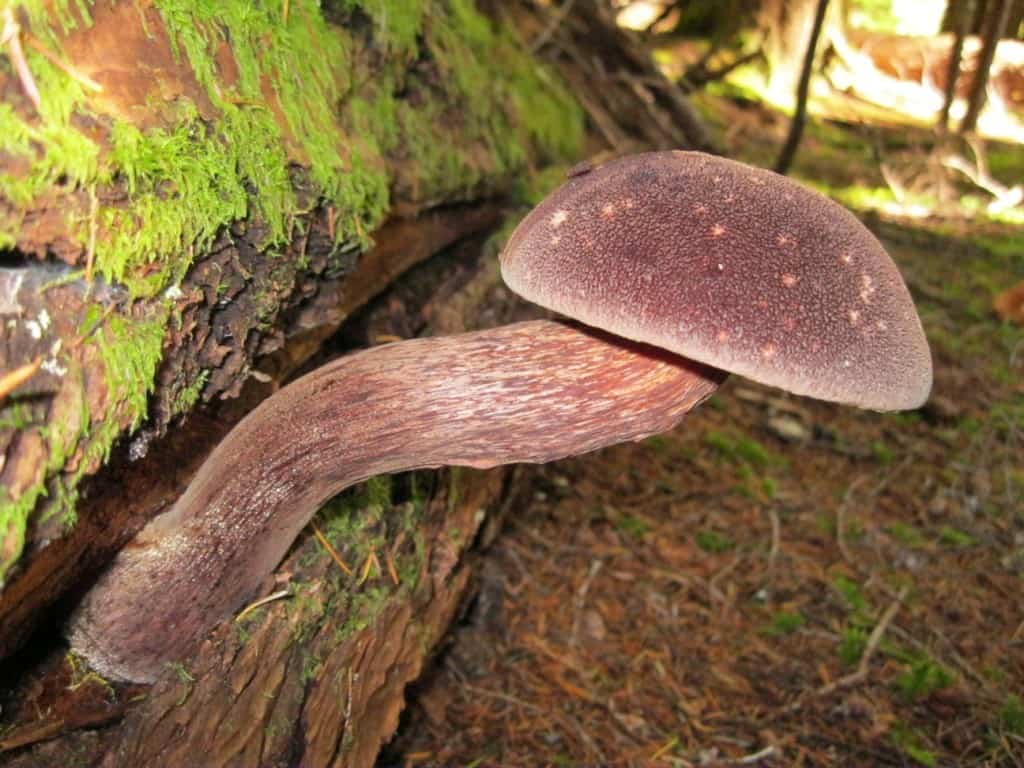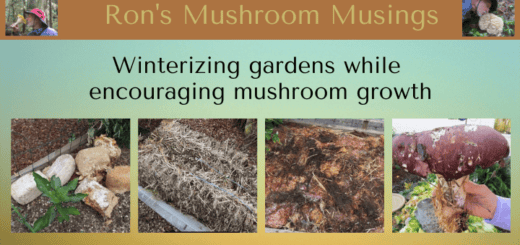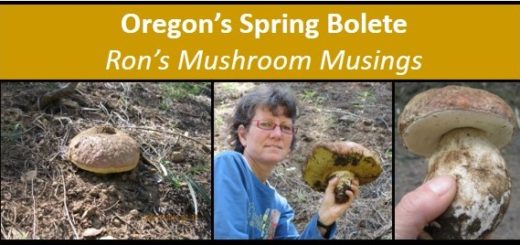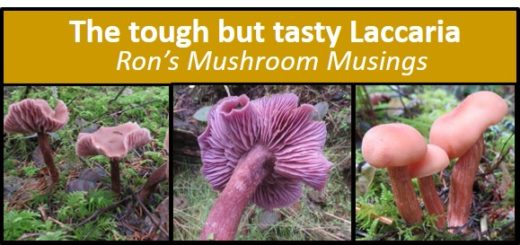A Bolete worth admiring

One of the more desirable and sought after early fall season mushrooms is Boletus edulis or more commonly known as the King Bolete. And while I agree it is a fun mushroom to find and introduce to your sauté pan or favorite recipe, many of the other Bolete species are sadly overlooked or ignored. While the King is an attractive looking specimen, I think it pales in comparison to Boletus mirabilis, commonly called the Admirable Bolete. As its common name implies, it is a mushroom species to be admired for its color, stature, and interesting cap and stem patterns. I also believe it is much easier to find than the more persnickety King Bolete.

Sandy and I have found the Admirable Bolete from the coast to the Cascades and forested places in between. It is even listed in Steve Carpenter’s pocket guide to mushrooms found on Marys Peak. Once you familiarize yourself with the key features of this mushroom, it becomes easily identifiable. The cap is described as being tomentose or covered with matted woolly hairs which gives it a soft to the touch feel and is never slimy or sticky. The cap can also develop off-white to pinkish spots, especially as the mushroom ages. The pores under the cap can take on various shades of yellow also depending on the age of the mushroom. The stem or stipe usually expands as it goes from the cap to the base and can have quite a bulbous bottom. Although we have encountered specimens where the change in stem size was quite subtle. The stem color is amazing with streaks of different shades of brown, sometimes with pinkish hues mixed in. It can resemble the color patterns you see in mahogany wood. Like other Boletes it is mycorrhizal, forming symbiotic relationships with hemlock and Douglas fir trees.

Although, it is often found protruding out of downed and rotting conifer trees, especially Hemlock. The expansion into rotting wood may be solely for extracting elements from the decayed wood but may also be a tried and proven way to raise its spore emitting pores to a higher elevation thereby facilitating improved spore dispersal. Whatever the reason, look for this mushroom on the ground and on rotting logs in conifer forests containing hemlock and douglas fir trees in early fall to early winter. They are a very nice and flavorful mushroom which some describe as having a slight lemony taste. As with other edible Boletes younger, fresher specimens are best and always check to make certain insect larvae haven’t already started enjoying them.
Fruiting period: October through early winter.
Habitat: Solitary or scattered on well-decayed, moss-covered logs and stumps, occasionally on ground.
Cap: Dark reddish-brown, maroon-brown, to brown, often with a paler margin and pale pinkish brown to whitish spots.
Spore Surface: Sponge under cap. Pale yellow to greenish-yellow when young, aging to an olivaceous yellow.
Stem: Club shaped with a large swollen base. Dark brown to reddish-brown with streaks of pinkish-buff.
Veil/Volva: None
Spore Print: Olive-brown
Odor: Not distinctive.
References (books):
Mushrooms of Marys Peak and vicinity by Steven E. Carpenter
All That the Rain Promises and More by David Arora
Mushrooms of the Pacific Northwest by Steve Trudell & Joe Ammirati
Mushrooms of the Redwood Coast by Noah Siegel & Christian Schwarz





